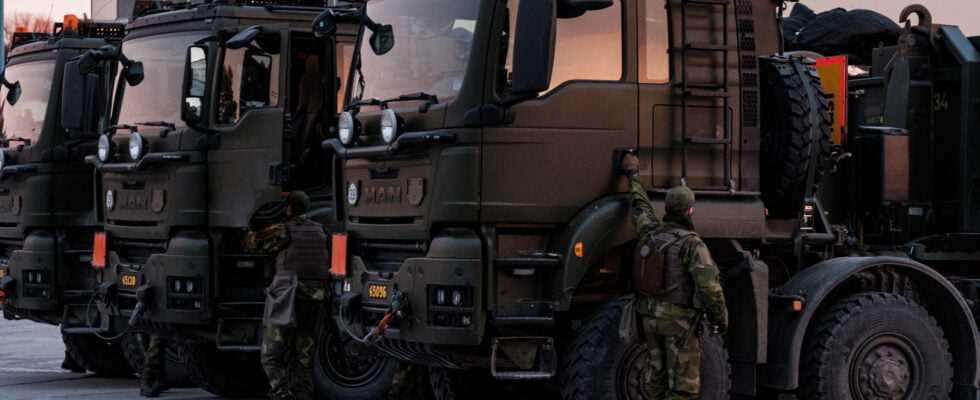ReportingIn a context of tensions with Russia, the Scandinavian country, which is not a member of NATO, delivered a show of force. An operation well received by the population.
For nearly a week, the images have been circulating on Swedish television channels and all the newspapers have made their front page. We see tanks, circulating on the roads of the island of Gotland, in the south-east of Sweden, while armed soldiers patrol the port of the city of Visby, where the reinforcements land.
According to local media, a hundred soldiers would have arrived, between January 14 and 15, by ferry and plane, to complete the regiment of 350 soldiers already stationed on the island, located in the Baltic Sea, a few hundred kilometers from Latvia. The numbers have not been officially confirmed. “There are a lot of uncertainties because we only saw what the army wanted to show us”, comments Pär Ullrich, head of information at the newspaper HelaGotland, whose editorial office is right in front of the ferry terminal.
A few days earlier, on January 12, the Swedish army had announced that it was going to increase its presence on the island of 60,000 inhabitants, the size of a third of Corsica, while Russia had deployed three landing ships in Baltic Sea, in addition to the three that are usually found there. Finally, the boats left on Tuesday 18 – before dropping anchor in the Kattegat Strait, between Sweden and Denmark, probably due to bad weather.
On the island of Gotland, the army was discreet after the arrival of reinforcements. Tuesday morning, no soldiers were patrolling the streets of Visby and the tanks had disappeared. Only the sound of two helicopters, flying low over the port, in the early morning, was a reminder of the events of the weekend.
“A redistribution of forces”
Passing through the island, before the visit of the Minister of Defense on Wednesday, the head of the army, Karl Engelbrektson, specified to the World that the reinforcement of troops in Gotland was not a response to “a direct threat”, corn “was part of a redistribution of forces” as part of’“an international environment marked by the rhetoric of the great powers and their reinforced capacities in the neighborhood”.
A little earlier in the afternoon, Mattias Ardin, commander of the Gotland forces, improvised a press briefing for the journalists, who had arrived in large numbers from Stockholm and neighboring capitals. In the parking lot of the old barracks, the colonel recalled the geostrategic importance of Gotland: “If you take a map of the Baltic, we are in the middle. Whoever is here can control the comings and goings, at sea or in the air. »
You have 62.41% of this article left to read. The following is for subscribers only.
